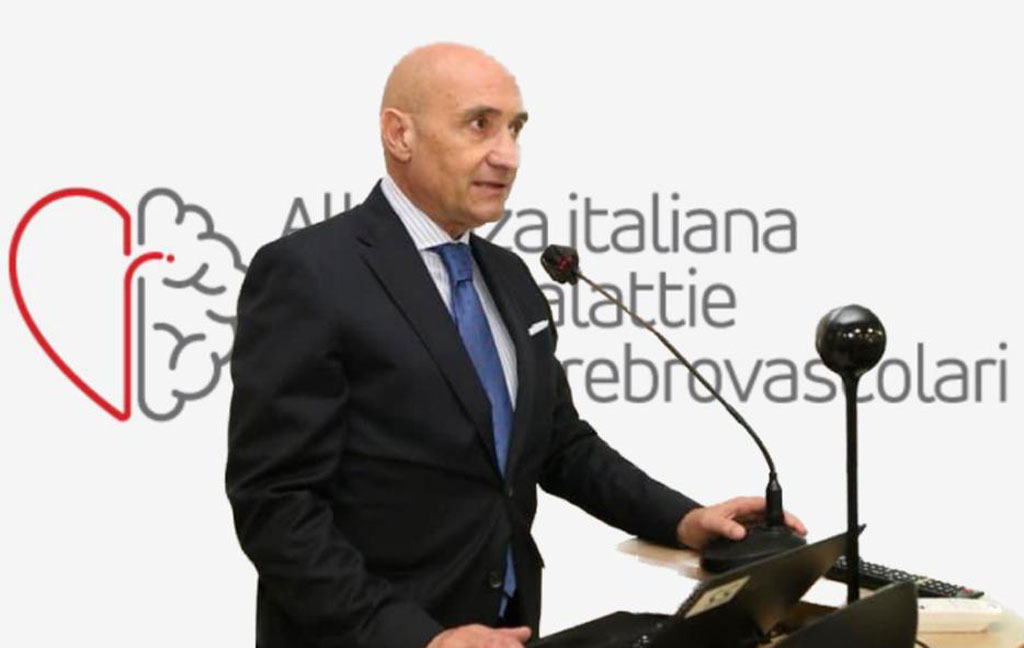Lamezia Terme – Doctor Gerardo Mancuso has been appointed to the Ministry of Health as a technical member in the committee of the “Italian Alliance of Cerebro-Cardiovascular Diseases”. Mancuso is the Director of the UOC of Internal Medicine of the Lametino Hospital and holds numerous scientific positions and is the National Vice President of the Italian Society of Internal Medicine. He is the author of more than 100 scientific publications, speaker of over 400 scientific reports on internal medicine and author of health management courses. He also held important management positions including General Manager of the Provincial Company of Catanzaro for more than four years and President of the technical-scientific committee.
The Italian Alliance for cardio-cerebrovascular diseases
It was established by the Minister of Health as a strategic agreement for interventions for the prevention, assistance and control of cardio-cerebrovascular diseases. The body is a permanent technical table for all the main stakeholders with the common goal of contributing to the strategies for the prevention and treatment of cardio-cerebrovascular diseases, in line with the Program “Gaining health: making healthy choices easy”. the National Prevention Plan and the National Chronicity Plan, in order to reduce their incidence, morbidity and mortality in the long term. Cerebro-cardiovascular diseases, inform in a note: “represent the first cause of death of the Italian population and the first cause of hospitalizations. Cardiovascular diseases are responsible for 44% of all deaths, 31.7% in males and 37.7% in females. In particular, ischemic heart disease is the leading cause of death in Italy, accounting for 28% of all deaths (10.8% in males and 9% in females). becomes chronically ill. The disease modifies the quality of life and entails considerable economic costs for society. In Italy, the prevalence of citizens with cardiovascular disability is 4.4 per thousand (Istat data). 23.5% of the Italian pharmaceutical expenditure (equal to 1.34 of the gross domestic product), is destined for drugs for the cardiovascular system (report on the state of health of the country, 2000).Cerebrovascular accidents are 8.8% (7.3% in males and 10.1% in females) and represent or the first cause of disability. Approximately 90,000 hospitalizations due to cerebral stroke are recorded in our country every year, of which 20% are recurrences. 20-30% of people with a stroke die within a month of the event and 40-50% within the first year. Only 25% of stroke survivors recover completely, 75% survive with some form of disability, and half of these suffer from a deficit so severe as to lose self-sufficiency. Stroke is more frequent after the age of 55, its prevalence doubles every decade thereafter; 75% of strokes occur in people over the age of 65.
Cardiovascular risk factors
“Cardiovascular risk factors – they highlight in a note – can be “non-modifiable” or “modifiable” through behavioral interventions and targeted therapies. There are various non-modifiable factors: Age: with advancing age the risk increases to develop cardiovascular diseases due to physiological, but above all pathological aging.Family and genetic factors: a history of cardiovascular diseases in first-degree family members (parents, brothers, sisters) at an early age, i.e. before the age of 55 in men and before the age of 65 in women, it represents an indicator of the risk of developing a cardiovascular event.Gender: thanks to the natural estrogen-progestin hormonal protection typical of the childbearing age, until menopause the female gender has a lower cardiovascular risk than to the male one, this advantage is lost with the menopause and the risk between the two genders is equalized. modifiable sources are: Smoking; a sedentary lifestyle and lack of physical activity, excessive alcohol consumption. Incorrect nutrition. Overweight and obesity. Diabetes mellitus which in our country is taking on the characteristics of an endemic disease. Dyslipidemias; hypercholesterolemia is the most important risk factor for cardiac infarction and ischemic stroke. Arterial hypertension. The Metabolic Syndrome. The latter is a clinical condition characterized by the simultaneous presence of at least three clinical elements including abdominal obesity, hypertriglyceridemia, low levels of HDL cholesterol, arterial hypertension, hyperglycemia. Another important factor is the environment, this negatively affects the place of residence, air pollution and substances that are used in agriculture”. Finally, experts can state that “a treatment and prevention strategy can reduce morbidity and the mortality of these difficult patients”.
